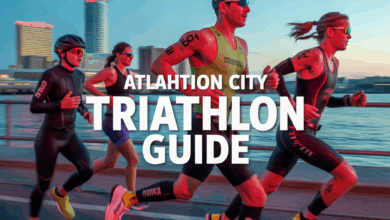Can You Workout With Mono? Smart Ways to Stay Active (and When to Rest)

Picture this: it’s the week before your half-marathon or the gym streak you’ve kept for months — then you wake up exhausted, with a sore throat and swollen glands. Your doctor says you have mononucleosis. Immediately you wonder, “can you workout with mono?” You’re not alone — many athletes and fitness lovers face the same dilemma. This guide helps you navigate safe exercise, smart recovery, and when full rest is actually the best move.
What is mono (mononucleosis) and why it matters for exercise
Mononucleosis, commonly called “mono,” is usually caused by the Epstein-Barr virus (EBV). Symptoms include extreme fatigue, fever, sore throat, swollen lymph nodes, and sometimes an enlarged spleen. Because mono affects energy levels and can enlarge the spleen, it has real implications for your training and safety.
Can you workout with mono?
Short answer: sometimes — but usually not the high-intensity stuff. Whether you can exercise with mono depends on symptom severity, presence of fever or splenic enlargement, and the type of workout you plan. Gentle, low-intensity movement is often okay once acute symptoms subside. High-intensity training, contact sports, and heavy lifting should be avoided until you’ve recovered and your clinician gives the green light.
Key factors to consider
- Fever or active infection: stop training.
- Severe fatigue: prioritize rest and sleep.
- Spleen enlargement: avoid contact sports and heavy abdominal strain.
- Cardiac symptoms (palpitations, chest pain): seek immediate medical attention.
Risks of exercising with mono
Working out too hard while your body fights a virus can prolong recovery, increase the risk of complications, and in rare cases cause spleen rupture. Pushing through extreme fatigue can also reset your progress by leading to prolonged downtime and setbacks in immunity. For these reasons, a conservative approach is best.
When it’s OK — gentle workouts and active recovery
Once your fever is gone and severe throat pain has eased, gentle activity can help circulation, mood, and sleep. Aim for low-impact movement and listen to your body.
Safe activity examples
- Walking: 15–30 minutes at an easy pace. Great for mental health and low energy days.
- Light yoga or mobility: focus on breathing, gentle stretches, and restorative poses.
- Bodyweight strength with low volume: 1–2 sets of controlled squats, push-ups on knees, or glute bridges—only if energy allows.
- Short, easy bike rides: keep intensity conversational and under 50–60% of normal effort.
Workout intensity and monitoring
Use Rate of Perceived Exertion (RPE) and heart rate as guides. Keep sessions at an RPE of 3–4/10 or below and avoid intervals, heavy loads, or workouts that leave you exhausted for the rest of the day.
Sample gentle workout variations
Here are three short routines you can try if your symptoms are mild and improving. Stop if symptoms worsen.
10-minute walk + mobility
- 5–10 minute easy walk
- 5 minutes gentle neck, hip, and shoulder mobility
- Finish with 2 minutes deep diaphragmatic breathing
20-minute restorative circuit
- 2 rounds: 10 bodyweight squats, 8 incline push-ups, 10 standing band rows (very light)
- 2 minutes light stretching
Low-intensity bike or elliptical
- 15–20 minutes at a pace where you can easily hold a conversation
- Finish with 5 minutes of stretching
Nutrition, sleep, and lifestyle tips to speed recovery
Exercise is just one piece of recovery. The following practical adjustments will support your immune system and energy levels:
- Prioritize sleep: aim for 8–10 hours when possible; naps can help during the acute phase.
- Hydration: drink water, herbal teas, and broths to stay hydrated and soothe sore throats.
- Nutrition: focus on protein, colorful fruits and vegetables, and easy-to-digest meals. Consider anti-inflammatory foods like berries, leafy greens, and fatty fish.
- Stress management: deep breathing, meditation, and low-intensity walks help cortisol balance.
- Monitor symptoms: keep a symptom log to share with your healthcare provider.
If you want sample meal ideas and timing to support recovery, check out our nutrition guides.
Real-world examples: how athletes handled mono
Collegiate runner Sarah had to stop training for three weeks after being diagnosed with mono. She focused on sleep, short walks, and a gradual return to easy runs. Two months later she resumed structured training with a coach’s supervision. Similarly, a recreational lifter, Mark, avoided deadlifts and heavy squats for six weeks due to spleen concerns, substituted light accessory work, and regained strength without complications. These real stories highlight patience and gradual progression.
When to see a doctor and return-to-play considerations
Always consult your healthcare provider before resuming intense exercise. If your doctor suspects splenic enlargement, they may advise avoiding contact sports and heavy-lifting for 3–6 weeks or longer. Cardiac symptoms require urgent evaluation. A gradual return-to-play plan — increasing volume and intensity week by week — is the safest strategy.
Practical tips for staying sane while sidelined
- Shift goals: focus on mobility, nutrition, sleep, and mental skills instead of performance metrics.
- Keep routine: short, manageable activities maintain habit and mood.
- Stay connected: engage with your training community for support and accountability.
For alternative sessions and progressive plans tailored to a low-energy phase, browse our workout routines page for ideas.
Frequently Asked Questions
Wait until fever and severe symptoms are gone. Many people need 2–4 weeks of rest from intense exercise; athletes may require 4–8 weeks. Follow your doctor’s guidance, especially if the spleen is enlarged.
Heavy lifting can increase abdominal pressure and stress the spleen. Avoid heavy compound lifts and maximal efforts until cleared by a clinician. Light resistance training may be acceptable if you feel well and have no spleen concerns.
Yes, post-viral fatigue can linger for weeks to months in some people. Gradual return to activity, proper sleep, nutrition, and medical follow-up are key to regaining baseline fitness.
Conclusion — can you workout with mono?
Can you workout with mono? In short: low-intensity movement can be helpful once acute symptoms resolve, but avoid high-intensity training, contact sports, and heavy lifting until you’re fully recovered and cleared by a healthcare provider. Listen to your body, prioritize rest, and return to training gradually. If you want structured, low-impact session ideas or daily recovery checklists, explore our wellness tips and start planning a safe comeback today.
Call to action: If you’re recovering from mono and need a tailored plan, leave a comment or sign up for our recovery workout emails to get week-by-week guidance that keeps you safe and moving forward.





